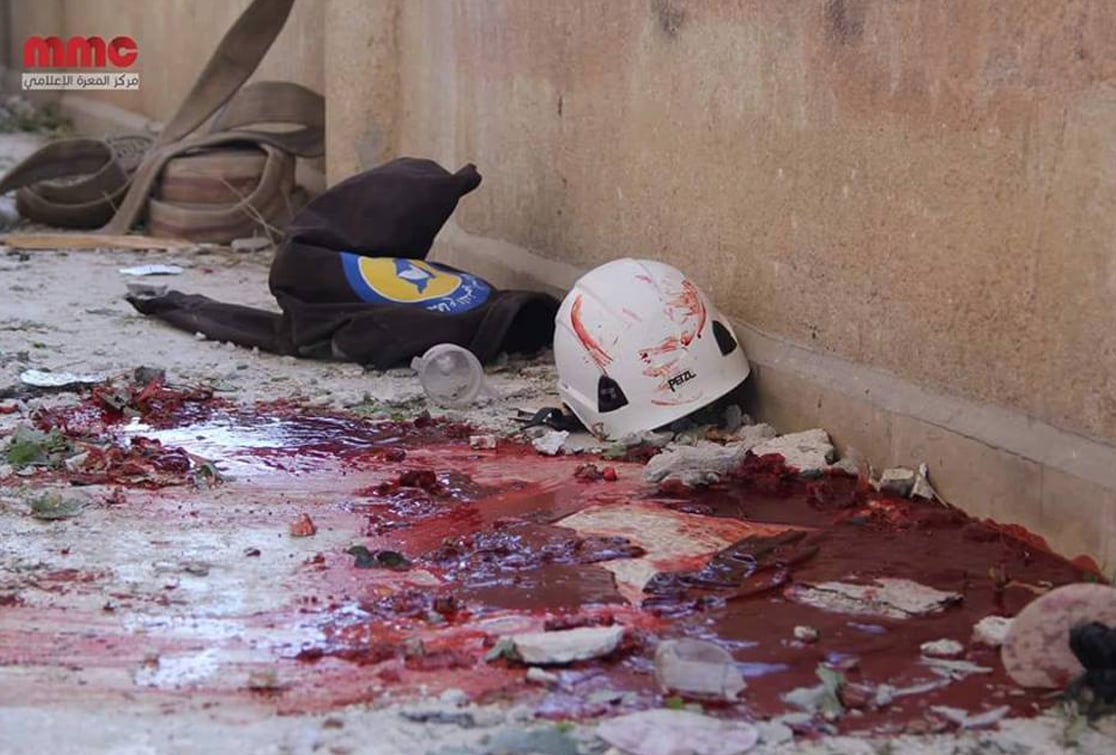44 Incidents of Attack on Vital Medical and Civil Defense Facilities in October 2016

SNHR has published its special monthly report that documents the violations against medical and civil defense personnel and their facilities by the conflict parties in Syria.
The report stresses that government forces have been involved, since 2011, in targeting and bombing medical and civil defense facilities as well as the conflict parties that targeted medical and civil defense personnel in killing and arrest operations. This indicates a deliberate policy that only aims to kill more and depends the suffering of the wounded whether they were civilians or armed.
Fadel Abdul Ghani, chairman of SNHR says:
“The Russian attacks on medical and civil defense centers as well as medical and civil defense personnel are considered a blatant violation of the international humanitarian law and constitute war crimes considering the chaotic, and in many cases, deliberate, targeting of protected objects. All of this have only deepened the suffering of the wounded and injured and is one of the main reasons behind the displacement of the Syrian people as it sends a very clear message: there is no safe area, or a red line, including hospitals, you either flee or perish”
The report documents the killing of 10 medical and civil defense personnel in October 2016 which are divided into eight killed by government forces, one by Russian forces, and one by unidentified groups.
The report breaks down the victims, where government forces killed two doctors, one nurse, one paramedic, and four civil defense members while Russian forces killed one medical staffer. In addition, one doctor was killed by unidentified groups.
Furthermore, the report documents 44 incidents of attack on vital medical and civil defense facilities including 31 attacks that were carried out by government forces where 13 medical facilities, three ambulances, and 15 civil defense centers were targeted. Additionally, Russian forces committed 13 incidents of attack which targeted six medical facilities and seven ambulances.
The report implements a high-level methodology for documentation which relies on survivors and families’ direct accounts in addition to the process of verifying and analyzing pictures, videos, and some medical records. However, the report notes that this documentation doesn’t include all the cases light of the ban and pursuit by government forces and some of the other armed groups.
The report notes that government forces have blatantly violated both the international humanitarian law and the customary international law and especially Article 3 of Geneva Conventions and the international humanitarian law and perpetrated crimes that amount to war crimes by targeting medical and civil defense personnel and their respective facilities. Also, government forces committed crimes that constitute crimes against humanity. Moreover, Russian forces committed acts that constitute war crimes through extrajudicial killings.
The report calls on the Security Council to take additional steps as it has been nearly two years since Resolution 2139 was adopted with no pledges to cease the indiscriminate bombardment operations being made.
The report emphasizes that the Security Council has to instill peace and security in Syria and implement the norm of “Responsibility to Protect” in order to save the Syrian people’s lives, culture, and arts from being destroyed, looted, and ruined. Also, sanctions must be expanded to include the Russian and Iranian regimes who have been directly involved in perpetrating crimes against humanity and war crimes against the Syrian people.
The report also recommends the implementation of the Responsibility to Protect (ICRtoP) norm after all others political routes were drought out through the Arab League and then Mr. Kofi Annan’s plan. steps under Article 7 of the Rome Stature must be taken and the norm of the Responsibility to Protect, which was established by the United Nations General Assembly, must be implemented as the Security Council is still hindering the protection of civilians in Syria. The report also calls for renewing pressure on the Security Council to refer the Syrian case to the International Criminal Court.
Lastly, the report urges international organizations to send volunteers to work in safe areas where wounded are sent for treatment especially after many death cases were documented where many patients died because of the limited medical capabilities.


